 W
WBeanie Babies are a line of stuffed toys created by American businessman H. Ty Warner, who founded Ty Inc. in 1986. Notably, the toys are stuffed with plastic pellets ("beans") rather than conventional soft stuffing. The toys come in many different forms, mostly animals.
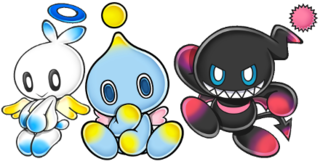 W
WChao are fictional life forms in the Sonic the Hedgehog video game series published by Sega. They are small, childlike creatures that go through a complex life cycle and exist in several visual forms depending on how they are raised. Developer Sonic Team incorporated Chao into the games to encourage players to explore levels and support the good–evil dichotomy of Sonic Adventure 2.
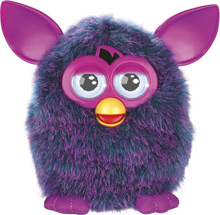 W
WFurby is an American electronic robotic toy that was originally released in 1998 by Tiger Electronics. It resembles a hamster or owllike creature and went through a period of being a "must-have" toy following its holiday season launch, with continual sales until 2000. Over 40 million Furbies were sold during the three years of its original production, with 1.8 million sold in 1998, and 14 million in 1999. Its speaking capabilities were translated into 24 languages.
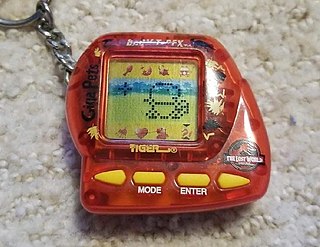 W
WGiga Pets are digital pet toys that were first released by Tiger Electronics in the United States in 1997 in the midst of a virtual-pet toy fad. Available in a variety of different characters, each Giga Pet is a palm-sized unit with an LCD screen and attached key ring. To ensure a happy, healthy pet, its owner has to take care of it similar to how one might care for a real animal, including feeding, cleaning, and playing with their Giga Pet.
 W
WIObox Oy was a Finnish mobile and web portal operator. Formed in 1999, the dot-com company ended up as part of Telefónica Mobile.
 W
WJewelpet was a Japanese media franchise and toy line created in 2008 as a joint venture between Sanrio and Sega Toys, produced by the third character designer of Hello Kitty, Yuko Yamaguchi and illustrated by the character designer of Cinnamoroll, Miyuki Okumura. The franchise was originally launched on January 15, 2008, focusing on animals named after jewels, birthstones and minerals, who can use magic using their eyes.
 W
WThe MOPy fish is a freeware cyberpet, released in October 1997 for Microsoft Windows by The Global Beach Group on behalf of Hewlett-Packard. It had been downloaded more than 10 million times as of the year 2000. Based on the blood parrot cichlid fish, the MOPy fish has a complex behavior pattern.
 W
WMoshi Monsters was a British web browser game aimed at children aged 6–12, with over 80 million registered users in 150 territories worldwide. Users could choose from one of six virtual pet monsters they could create, name and nurture. Once their pet had been customized, players could navigate their way around Monstro City, take daily puzzle challenges to earn 'Rox', play games, personalize their room and communicate with other users in a safe environment, although this has been disputed.
 W
WNabaztag is a Wi-Fi enabled ambient electronic device in the shape of a rabbit, invented by Rafi Haladjian and Olivier Mével, and manufactured by the company Violet. Nabaztag was designed to be a "smart object" comparable to those manufactured by Ambient Devices; it can connect to the Internet. It is also customizable and programmable to an extent. Sylvain Huet developed most of the embedded code of all Violet objects. Sebastien Bourdeauducq developed the Wi-Fi driver. Antoine Schmitt has been their behavior designer and Jean-Jacques Birgé their sound designer. Maÿlis Puyfaucher wrote all the original texts pronounced by the rabbit.
 W
WNeko Atsume: Kitty Collector is a mobile cat collecting game developed by Hit-Point Co., Ltd. for iOS and Android, released on October 20, 2014.
 W
WPet Rock is a collectible toy made in 1975 by advertising executive Gary Dahl. Pet Rocks are smooth stones from Mexico's Rosarito Beach. They were marketed like live pets, in custom cardboard boxes, complete with straw and breathing holes. The fad lasted about six months, ending after a short increase in sales during the Christmas season of December 1975. Although by February 1976 they were discounted due to lower sales, Dahl sold over 1 million Pet Rocks for $4 each, and became a millionaire.
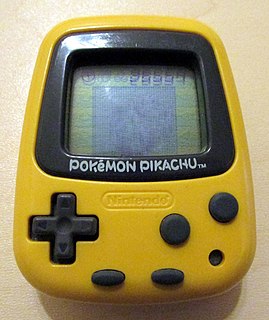 W
WPokémon Pikachu, also known as Pocket Pikachu (ポケットピカチュウ) in Japan, is a limited series of two portable Pokémon digital pets featuring the famous yellow electric-type Pokémon, Pikachu. Released on March 27, 1998, in Japan, it was intended as an exercise toy and mentioned by Guinness World Records as the most popular exercise toy of its time.
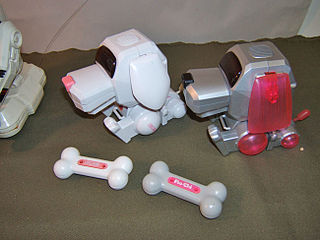 W
WPoo-Chi, one of the first generations of robopet toys, is a robot dog designed by Samuel James Lloyd and Matt Lucas, manufactured by Sega Toys, and distributed by Tiger Toys. Poo-Chi was released in 2000 and discontinued in 2002.
 W
WPou is a virtual pet game for BlackBerry 10, iOS and Android developed and published by Lebanese designer Paul Salameh. It is somewhat similar to Tamagotchi, a fad game that required caring for a simulated creature.
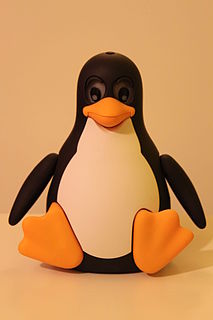 W
WTux Droid is a Linux wireless Tux mascot with a programmable interface, allowing it to announce events by its gestures and by ALSA driven sound. The events are detected by specific gadgets, which are handled by the Tux Gadget Manager. The Tux Droid supports Linux kernel 2.4 or later and needs an 800 MHz CPU and 128 MB RAM. Communication from Tux Droid to the computer is via signalling operating in the 802.11 WLAN band, but not compatible with Wi-Fi. The receiver resembles a plastic fish, and connects to the host computer's USB port. An infrared remote control is supplied; signals from this are received by Tux Droid and sent to the host software over the wireless link. For media detection it needs an internet connection. The mascot is driven by Atmel AVR RISC microcontrollers. The new version supports also Windows-based PCs. The Tux Droid can be used with Windows XP and Windows Vista.